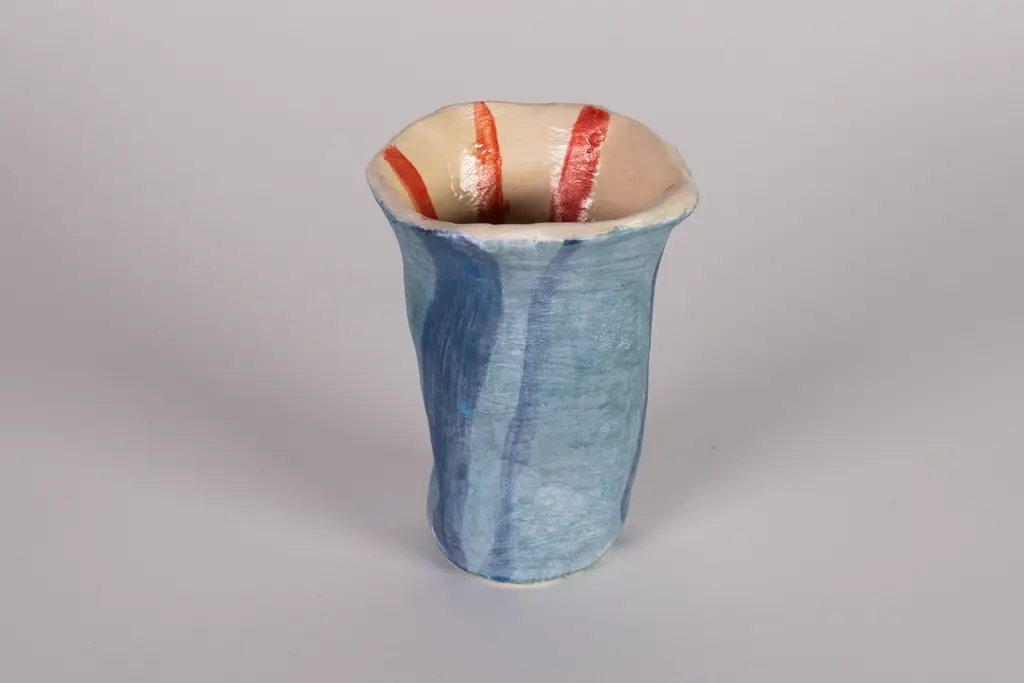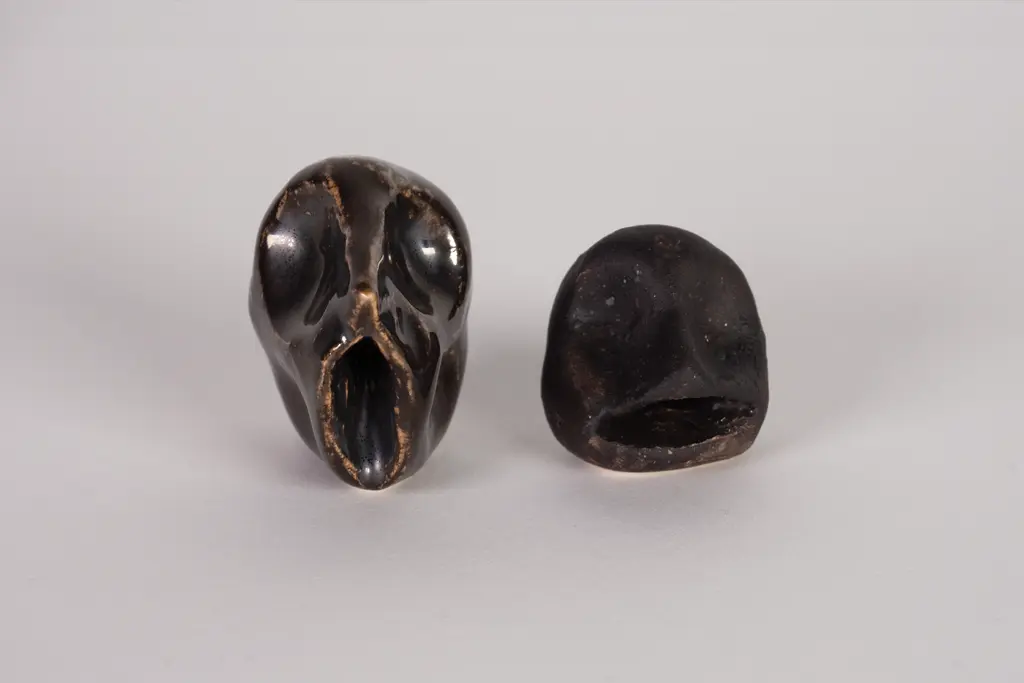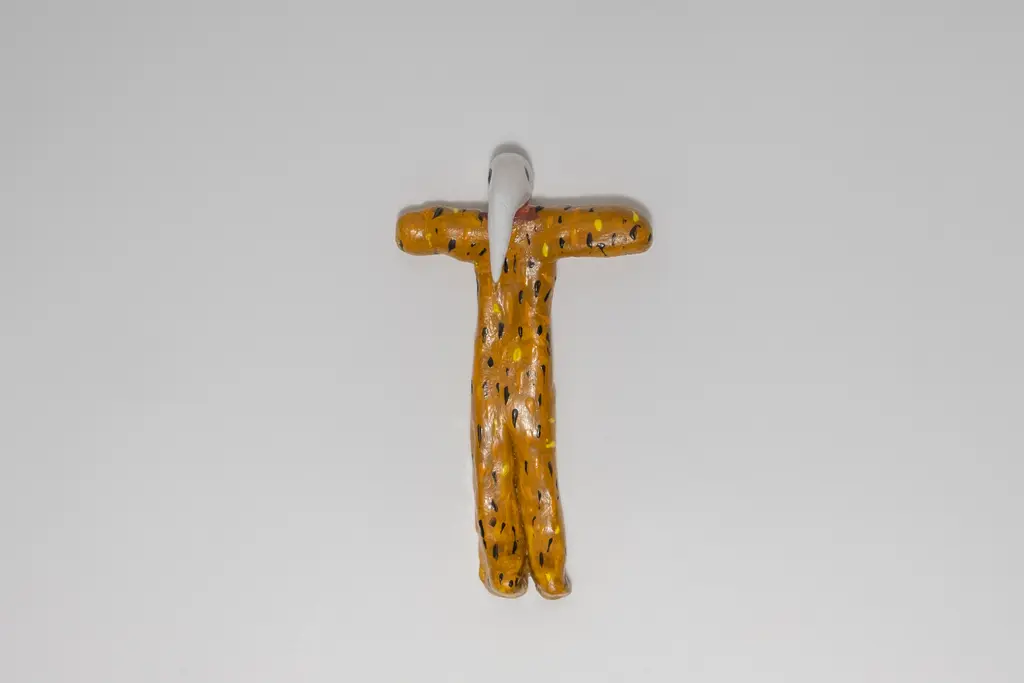UAL Showcase is the place to find graduates setting the pace in fashion, art and beyond

UAL Showcase, the online platform from University of the Arts London, presents the work of some of the UK’s finest emerging creatives. We caught up with a handful of students you'll find there.
In partnership with UAL
Words: Kyle MacNeill
University of the Arts London – or UAL to save a bit of ink – has quite the portfolio of colleges not least the esteemed institutions of Camberwell College of Arts, Central Saint Martins, Chelsea College of Arts, London College of Communication, London College of Fashion, and Wimbledon College of Arts.
Its roster of historic and contemporary buildings, studios and hallowed halls scatter the capital, giving way to some of the UK’s most iconic (and best-dressed to boot) creative talent.
The best part? Now, UAL has its very own online portfolio platform: Showcase. Doing exactly what it says on the tin, the slick website acts like an exhibit, spotlighting the work of students from all six of their colleges, plus its relatively new UAL Creative Computing Institute. First launched during the pandemic, the scheme now offers a permanent digital display, giving every single alumnus a spot to flex their work for a year after graduating.
“There’s no better place [than Showcase] to find other creatives to collaborate with. Plus, the description area allows you to hear about the artist’s thought process, which is really nice”
Pearl Jacques, BA Graphic Design Communication, Chelsea College of Arts
For students keen to share their stuff, it’s a neat cheat code. Rather than just dumping all your images on Instagram or making a naff website, you can instead present your project in a clean, easy-to-use format. Adobe Portfolio, who?
On the other side, it’s also just as handy for prospective recruiters, commissioners and collaborators – a factor new grads will be glad to hear. Indeed, every profile features contact details, so viewers can get in touch. Think of it as an actually up-to-date directory of designers, artists, coders, writers, and creatives, ideal if you’re an actual curator, part-time aesthete or anything in between. The big names on campus, after all, are the big names of the future.
After scrolling through Showcase ourselves, we handpicked some students from across the university, each one working at the vanguard of art, fashion and the creative industries. So, let’s meet them, shall we?
Milton Stavrou, BA Jewellery Design, Central Saint Martins
Inspired by his father’s fish and chip shop and the cost-of-living crisis, Milton’s final project “Cheap as Chips: Principles of a Fish Supper” turns each stage of everyone’s favourite Friday night dinner into haute joaillerie. Amber is mashed into spuds, stainless steel is twisted into a deep-fat fryer brooch and silver is etched to create a fish skin necklace. Delicious!
What memories do you have of your father’s fish and chip shop?
So many! I’ve been working there since I was 13 and still work there to this day. The first job I was ever given by my father was cleaning the ceiling and wall tiles – it was not fun. It’s been a constant in my life. Originally, I never considered using the shop in my project, but when I started thinking more introspectively, I realised the perfect subject was right under my nose.
How did you crush up the amber to create the chips?
Amber is fossilised tree resin, so it’s quite soft. This means it’s quite easy to crush and carve, especially when using stone carving tools usually reserved for harder stone. The hardest part was finding untreated amber that was big enough to cut and shape into chunky chip shapes.
What’s cool about the Showcase platform?
I suppose the immediacy of it. I appreciate the fact it has given graduates a platform to tell the story behind their work as each showcase is curated by the students themselves.
Salt and vinegar, yes or no? (And… pickled egg?)
Yes, always yes. There’s nothing like chip shop vinegar. Unfortunately, we don’t have pickled eggs. Maybe that’s something that should be added to the menu.
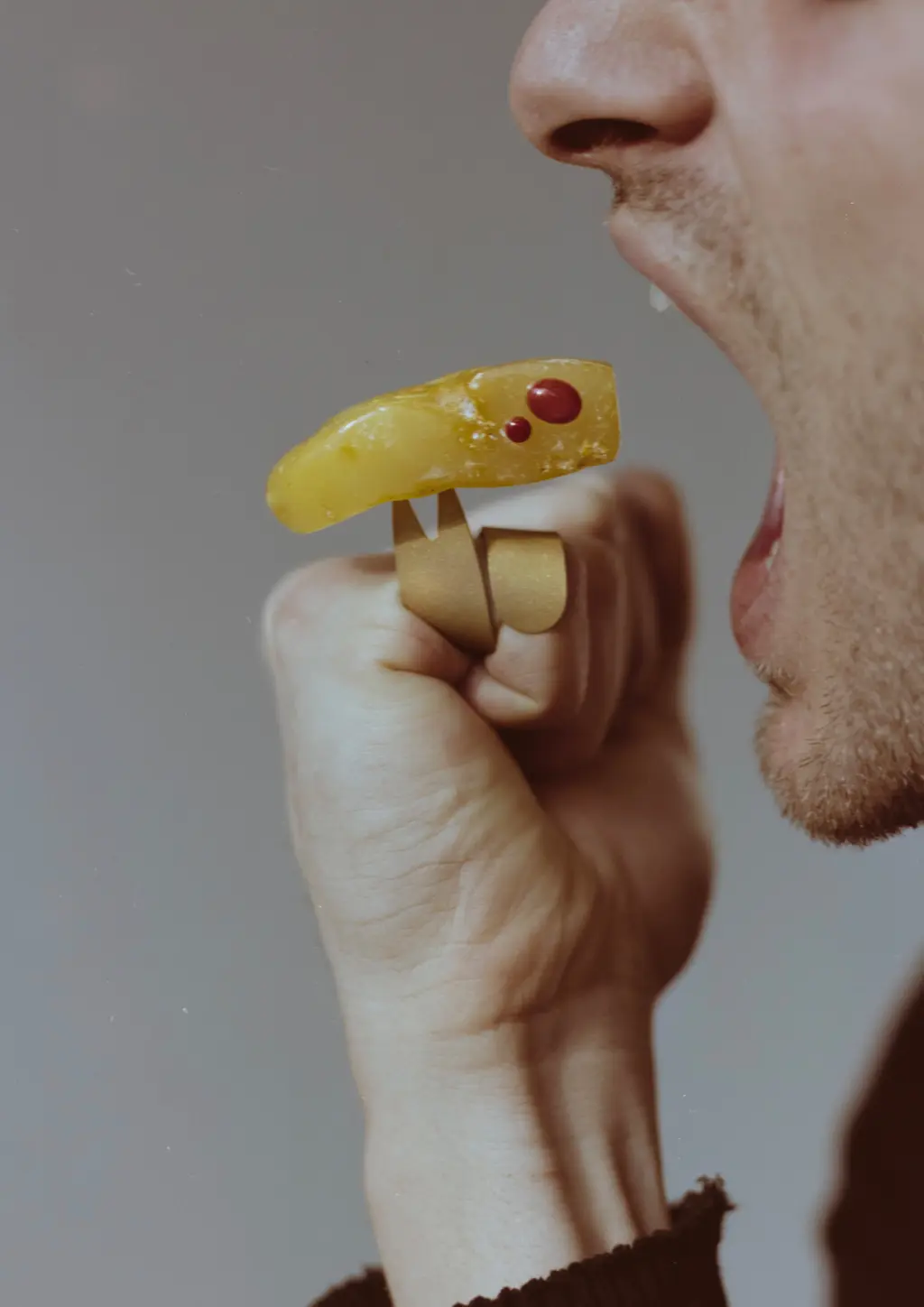
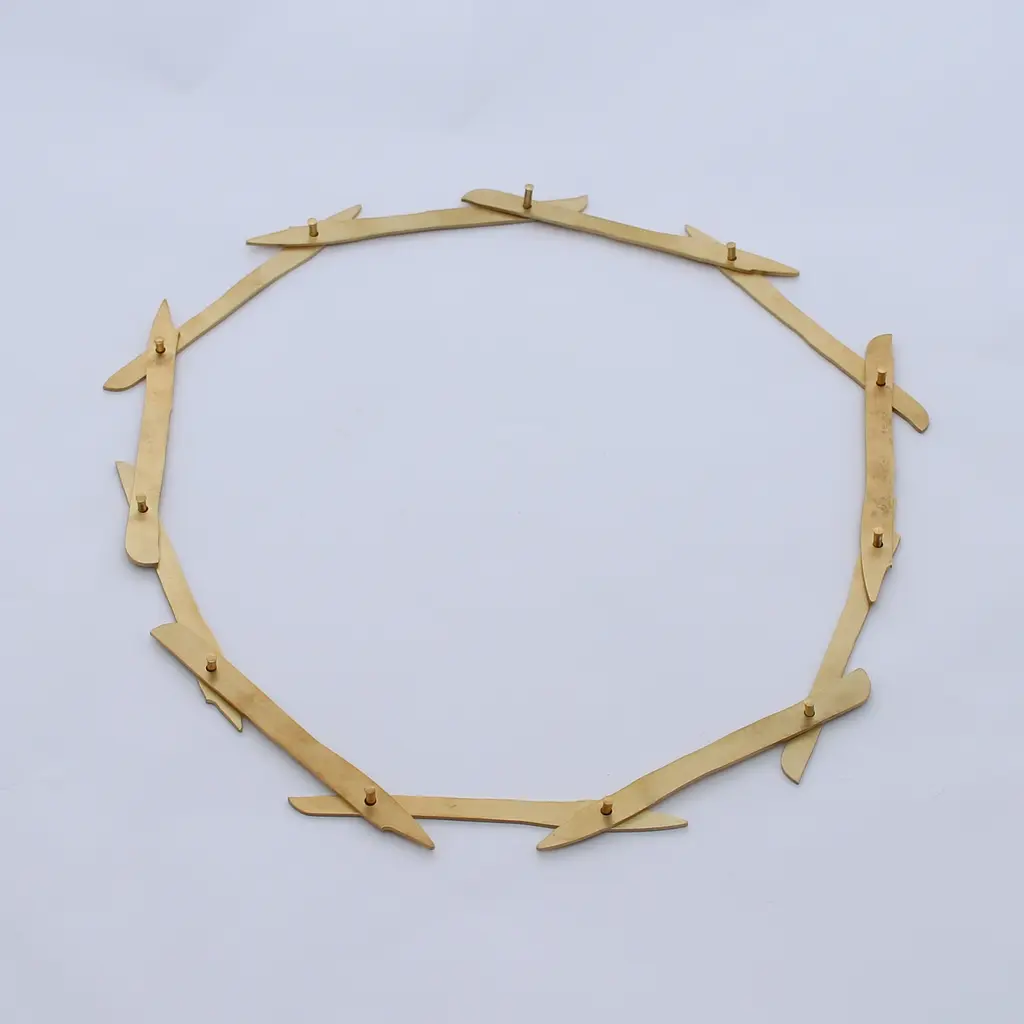
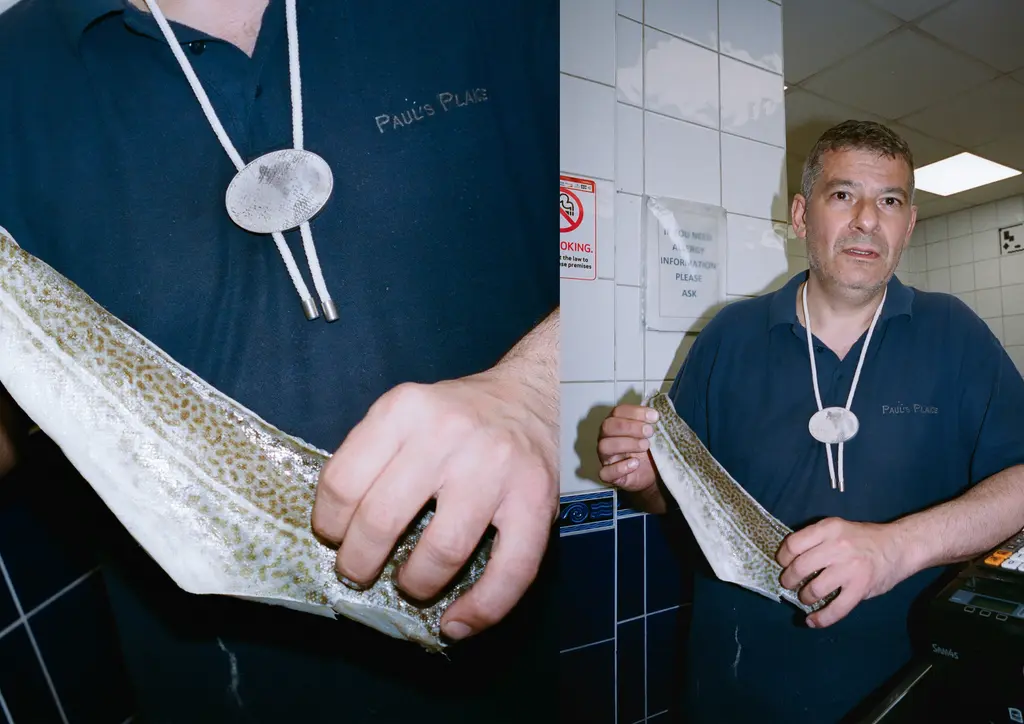
Emily Mellis, BA Illustration, Camberwell College of Arts
Proving there’s another side to Essex beyond “The Only Way Is Essex”, Emily’s final project explores the forgotten history of the county through her experiences growing up in Colchester. The result is an impressive, monochrome book blending maps, illustrations of artefacts and retrofuturistic typography.
What was life like growing up in Essex?
I’m from Colchester, which has a rich Roman heritage, so we learnt about this history from a very early age. I remember visiting my nan in Southend and having so much fun on the beach and at the Adventure Island theme park. I really loved growing up in Essex – there was always a beach nearby and London [was] just a quick train ride away.
How do you think most people in the UK view Essex?
I think many people associate Essex with the TV show The Only Way is Essex, which features glamorous women often drinking and bickering. These women have similar attributes, such as thick eyelashes, heavy fake tan and leopard print dresses. I wanted to express how diverse the county is; it’s full of different ethnicities, classes, abilities, and personalities. But I also wanted to express that the minority who fit into these stereotypes deserve respect.
What is the “lore” of Essex that you represented through your book?
In my book, the lore starts from the very beginning: the discovery of the county. The Romans settled in Essex and made Colchester the capital of the country. Centuries later, Essex towns such as Basildon, Southend and Harlow accommodated ex-Londoners through iconic, yet controversial, post-war architecture.

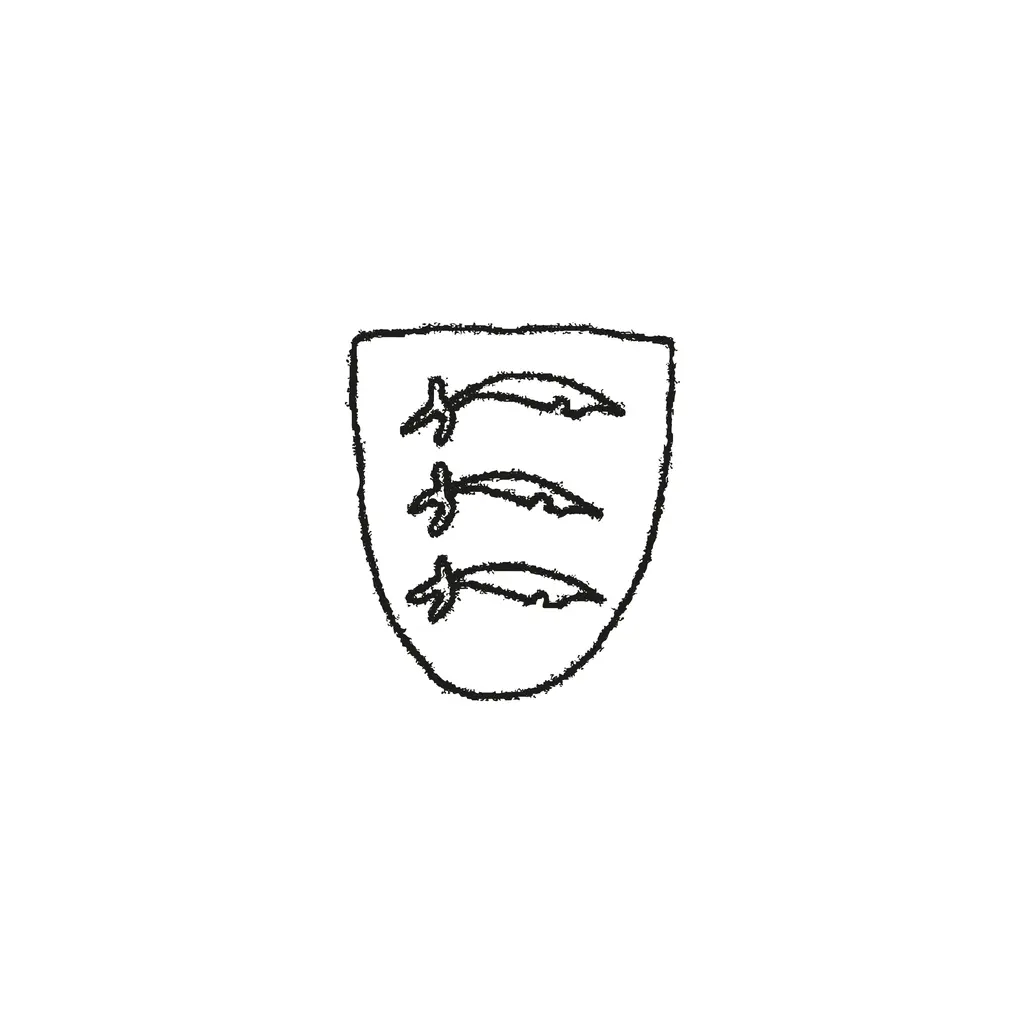
Rose Christie-Miller, BA Technical Arts for Theatre and Performance, Wimbledon College of Arts
Lifting the lid on one of the most magical places in existence – the club toilet – Rose’s final project sees a prosthetic punk reading a mag on the bog. The dummy even features an animatronic (and poorly pedicured) foot tapping along to music.
How did you come up with your punk-inspired character?
My piece was largely inspired by a trip to Berlin. Experiencing the club culture evoked the scenes captured by photographers such as Derek Ridgers and Caroline Coon during the subcultural movements of the 70s and 80s. This was the foundation from which I developed my scene, incorporating a punk aesthetic into one of the most consequential club settings: the toilet.
And how did you literally create him?
To make my piece, I life-casted various body parts from various different people, a bit like Frankenstein! I then created moulds of these which were cast with silicone to recreate the body parts, before seaming, painting and hair punching them to enhance their realism. These parts were then attached to a body made of plaster. The foot tapping was achieved using animatronics, utilising a rod underneath the set which is attached to a motor that pushes the foot up and down.
Are prosthetics on the rise in fashion and photography?
Definitely. Prosthetics can push the boundaries of the human form. Artists such as Nadia Lee Cohen have used prosthetics to create surrealist, fantasy settings or forms. But the great thing about prosthetics is that anyone can do it – it’s very accessible.
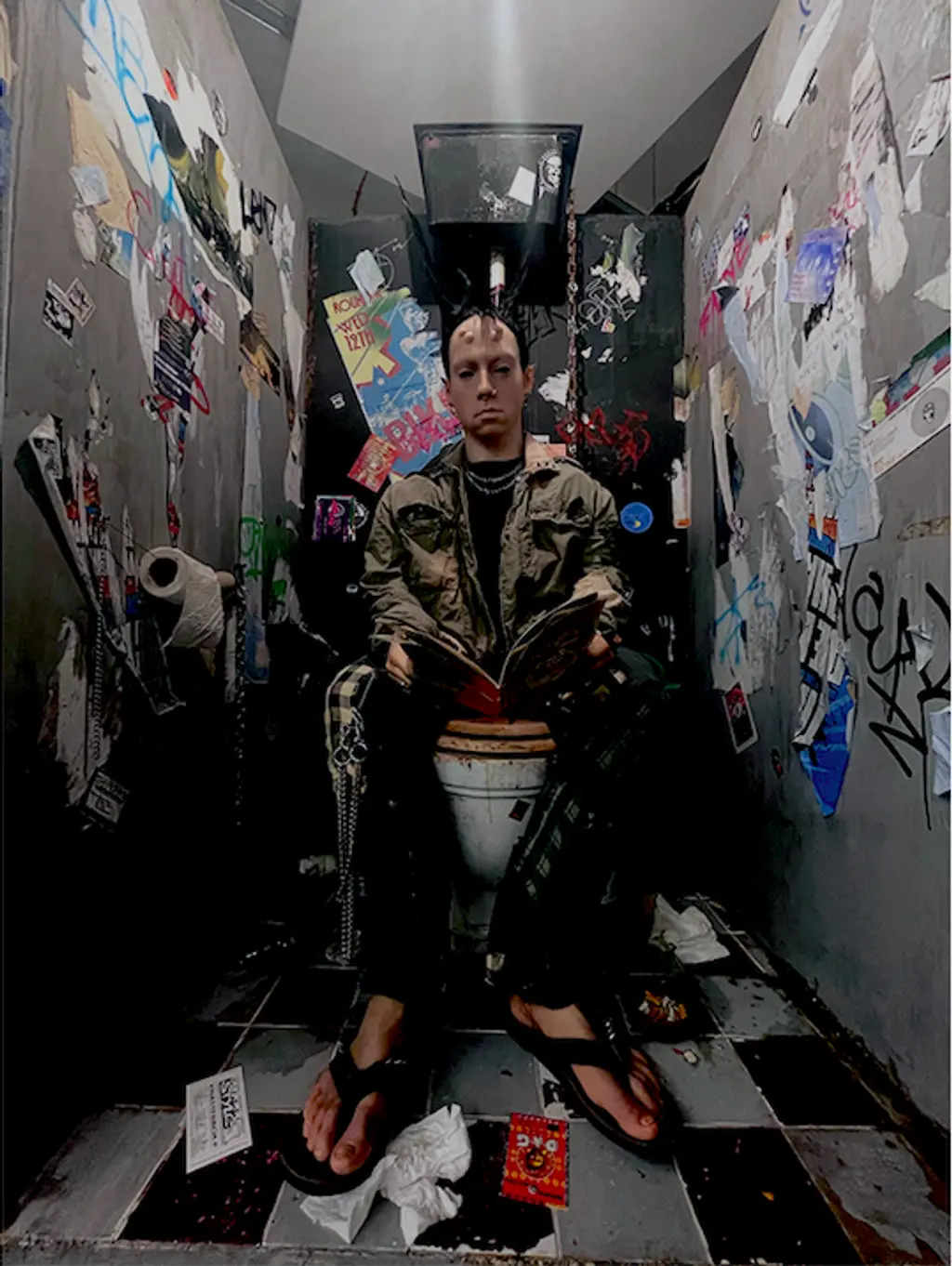
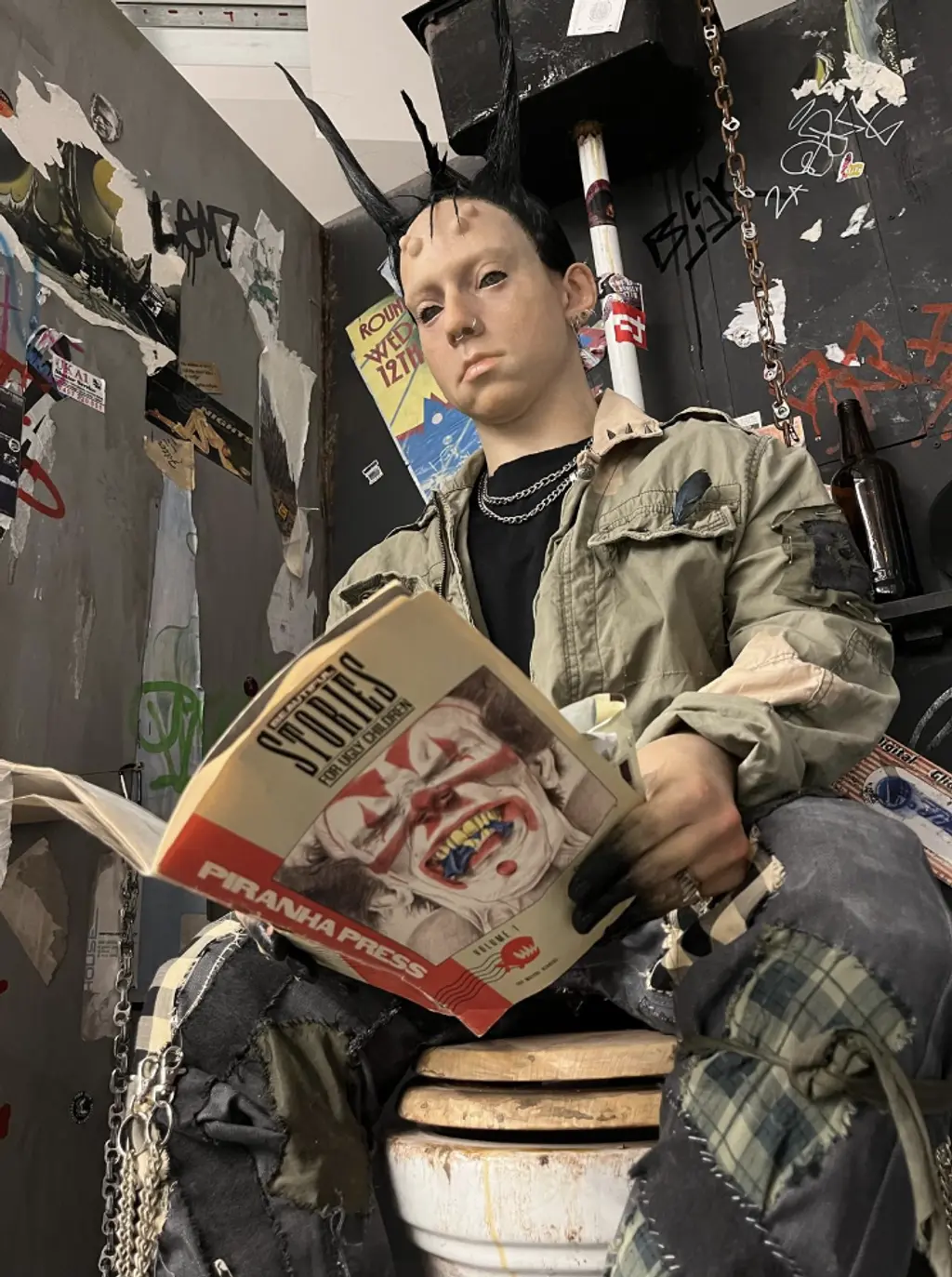
You Wu, BA Fashion Design and Development, London College of Fashion
A fashion designer committed to sustainable practices, You Wu crafts all-frills romantic wear from pre-loved table cloths and hankies. She’s also the creator of Kissmi London, a label offering a range of lacy skirts and sexy sheers made with loving hands.
Tell us about the sustainable aspects of the collection.
I utilise vintage fabrics, such as old handkerchiefs, tablecloths and napkins, giving them a new life in my designs. This not only minimises waste but also celebrates the history and craftsmanship of these materials. I believe in the power of fashion to drive positive change, and making the collection eco-friendly aligns with my values of responsibility and respect for the planet.
Where did you source the handkerchiefs, tablecloths and napkins from?
From various online marketplaces, like Etsy and Ebay, where I can find unique and high-quality materials. Additionally, I collaborate with antique shops and collectors. By carefully selecting each piece, I ensure that every fabric used in the collection has a story to tell.
Why are you into the Rococo and Regency eras?
The opulence of Rococo and the refined simplicity of Regency fashion inspire me with their rich textures, delicate embroidery and graceful silhouettes. By drawing inspiration from these periods, I aim to bring a touch of historical elegance and sophistication to modern fashion.
A top tip for people using UAL Showcase for the first time?
Use specific keywords related to style, materials or themes to narrow down the vast pool of talent. Look for unique narratives, as designers with compelling stories often bring a unique perspective that can add significant value to your projects. Don’t hesitate to engage and network with designers directly through the platform, as building connections can foster potential collaborations.
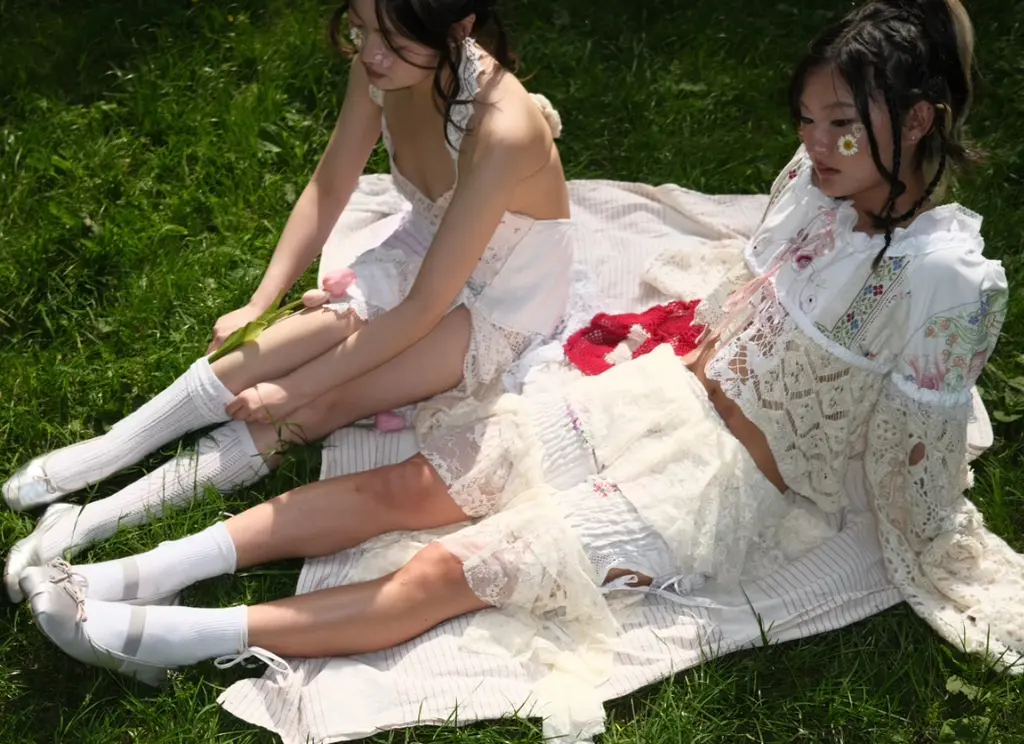
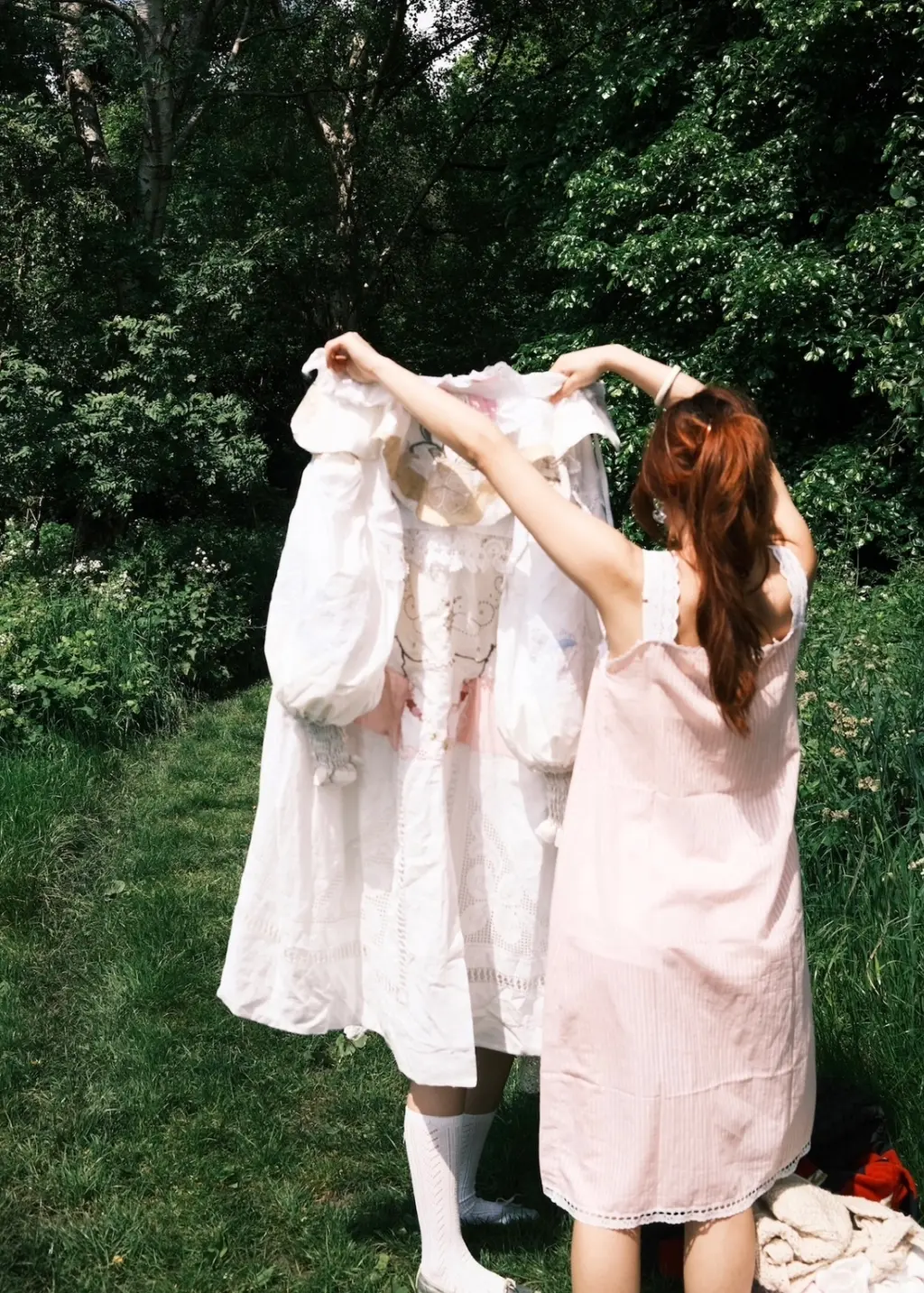
Jalisa Abeid, BSc Creative Computing, UAL Creative Computing Institute
For immigrants in the UK, access to green spaces is often severely limited, even though research shows it eases relocation challenges. This formed the basis for Jalisa’s “Roots and Resilience” augmented-reality design, displaying a chayote (a South American fruit) sprouting against the odds.
What was the inspiration for “Roots and Resilience”?
It was initially inspired by the aesthetic of gardens from people of immigrant heritage. Data on immigrants and gardens showed that they faced a green-space deficiency.
What are the benefits of increasing access to these green spaces?
It revolves around the basis of belonging, security and ownership, and helps people connect to different parts of their identity through gardening.
Tell us about the chayote… Why did you make this the central crop?
I was inspired by a farmer called Robert Samunda, who featured in a short documentary called Our Land by Alexandra Genova, looking at how agriculture is the least racially diverse profession in the UK. He was able to harvest and sell the chayote within the UK despite its climate, which wasn’t easy. I felt it was representative of the immigrant experience.
What’s your favourite green space near UAL?
My campus was based in Camberwell, so it would have to be Burgess Park. It’s a nice space to relax and see different things. I’ve even seen someone ride a Shetland pony there!

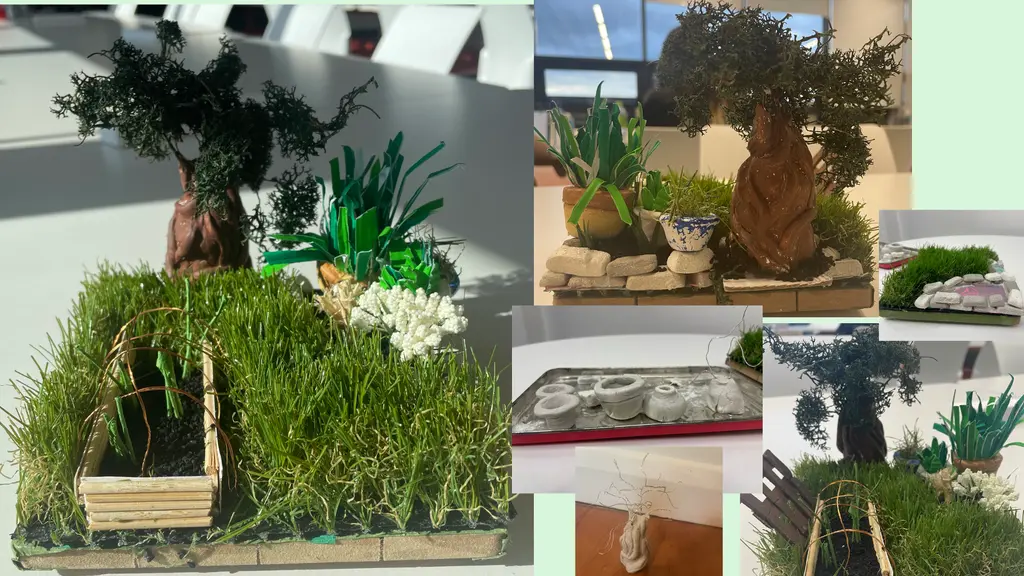
Pearl Jacques, BA Graphic Design Communication, Chelsea College of Arts
Welcome to “UFO Club 2066” – no hoods, no hats, no humans. Taking cues from the original UFO Club which was open for just one year from 1966 – 1967 in London, Pearl’s project imagines its hypothetical relaunch some 100 years later, complete with the same acidic visuals and cosmic fashions.
When did you come across the original UFO Club?
Towards the end of my project. I had intended to create a publication looking at iconic club closures. This idea came about because my mum actually met my dad dancing to techno at Turnmills in February 1999. After research into Turnmills and its famous slogan – “the original all-night bender” – I came across several other clubs, including UFO Club.
What was the club itself like?
It was located on Tottenham Court Road, characterised by elaborate light shows, often featuring projections of swirling colours and abstract patterns synchronised with the music. It had everything: poetry readings, dance troupes, avant-garde artwork by Yoko Ono, films and slide shows projected on walls. And yes, a LOT of acid.
We’re big fans of tin foil at THE FACE. How did you use it?
Not being a fan of tin foil is a red flag! If “cyber”was a material then it would have to be tin foil! I watched a lot of Red Dwarf when I was younger and they used lots of tin foil within their spaceship. I put it on the floor, on the walls, the models wore it… It was everywhere!
What do you like about the UAL Showcase platform?
There’s no better place to find other creatives to collaborate with. Plus, the description area allows you to hear about the artist’s thought process, which is really nice.

Guy Connolly, BA Photography, London College of Communication
Ever been to Conghalán? ‘Course you haven’t – it doesn’t exist. But Guy’s fictional country, inspired by his English and Irish heritage, questions our cultural understanding of lineage through the creation of fake relics and folkloric photography.
How does folklore inspire your work?
Growing up in rural Kent and spending a lot of time with my family in Ireland, I was surrounded by natural scenery and a huge amount of history and culture. I have recently been drawn to myths and legends. I find it fascinating that you can find similar themes and imagery in different cultures throughout history. Knowing that humans almost seem to have a kind of ‘hive-mind’ is a comforting feeling to have when we live in such a divisive time.
What was the most challenging piece to create in your “A Brief History of Conghalán” installation?
The Scarecrow of Arnkellag. I hand-made the costume, individually gluing clumps of hay to the clothes I had used as a base. I went into the process with no experience in creating costumes and I’m sure there are much better methods I could have employed. I wanted it to reference The Wicker Man and pagan beliefs through the use of natural materials.
What is the meaning of Conghalán?
The name “Conghalán” is a smash of two words: “Ó Coingheallaigh”, an old Irish spelling of my surname Connolly, and the Irish word, “tulán”, meaning mound or small hill. It both describes who founded the island and its topography.
